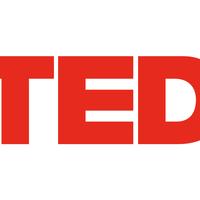Theo Jansen creates new creatures
I would like to tell you about a project which I started about 16 years ago, and it's about making new forms of life. And these are made of this kind of tube -- electricity tube, we call it in Holland -- and we can start a film about that and we can see a little bit backwards in time. Narrator: Eventually these beasts are going to live in herds on the beaches.
Theo Jansen is working hard on this evolution. Theo Jansen: I want to put these forms of life on the beaches.
And they should survive over there, on their own, in the future. Learning to live on their own, and it'll take couple of more years to let them walk on their own. Narrator: The mechanical beasts will not get their energy from food, but from the wind.
The wind will move feathers on their back, which will drive their feet. The beast walks sideways on the wet sand of the beach, with its nose pointed into the wind. As soon as it walks into either the rolling surf or the dry sand, it stops, and walks in the opposite direction. Evolution has generated many species.
This is the Animaris Currens Ventosa. (Applause) Jansen: This is a herd, and it is built according genetical codes, and it is a sort of race, and each and every animal is different, and the winning codes will multiply. This is the wave, going from left to right, you can see this one.
And now it goes from -- yes, now it goes from left to right. This is a new generation, a new family, which is able to store the winds. So the wings pump up air in lemonade bottles which are on top of that -- and they can use that energy in case the wind falls away, and the tide is coming up, and there is still a little bit of energy to reach the dunes and save their lives, because they are drowned very easily. (Laughter) I could show you this animal.
(Applause) Thank you. So the proportion of the tubes in this animal is very important for the walking. There are 11 numbers, which I call the 11 holy numbers. These are the distances of the tubes which makes it walk that way. In fact it's a new invention of the wheel. It works the same as a wheel. The axis of a wheel is staying on the same level, and this hip is staying on the same level as well. In fact, this is better than a wheel, because when you try to drive with your bicycle on the beach, you will notice it's very hard to do. And the feet just step over the sand, and the wheel has to touch every piece of the ground in between. So 5,000 years after the invention of the wheel, we have a new wheel. And I will show you in the next video -- can you start it, please? -- that very heavy loads can be moved. There's a guy pushing there behind, but can also walk on the wind very well. It's 3.2 tons. And this is working on the stored winds in the bottles. It has a feeler where it can feel obstacles and turn around. And that stuff, you see, is going to it the other way. Can I have the feeler here?
OK. Good. So, they have to survive all the dangers of the beach, and one of the big dangers is the sea. This is the sea. And it must feel the water of the sea. And this is the water feeler. And what's very important is this tube. It sucks in air normally, but when it swallows water it feels the resistance of it. So imagine that the animal is walking towards the sea. As soon as it touches the water you should hear a sort of sound of running air. Yes! So if it doesn't feel, it will be drowned, OK? Here we have the brain of the animal.
In fact, it is a step-counter, and it counts the steps. It's a binary step-counter. So as soon it has been to the sea, it changes the pattern of zeroes and ones here, and it knows always where it is on the beach. So it's very simple brain. It says, well there's the sea, there are dunes, and I'm here. So it's a sort of imagination of the simple world of the beach animal. Thank you. One of the biggest enemies are the storms.
This is a part of the nose of the Animaris Percipiere, and when the nose is fixed of the animal, the whole animal is fixed. So when the storm is coming up, it drives a pin into the ground. (Laughter) And the nose is fixed, the whole animal is fixed. The wind may turn, but the animal will turn always its nose into the wind. Now another couple of years, and these animals will survive on their own. I still have to help them a lot. Thank you very much, ladies and gentlemen.
(Applause).

